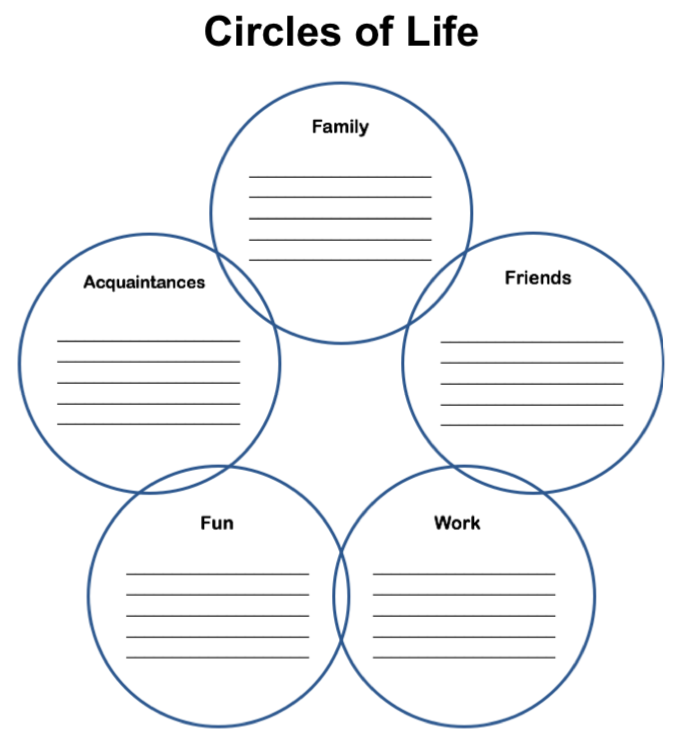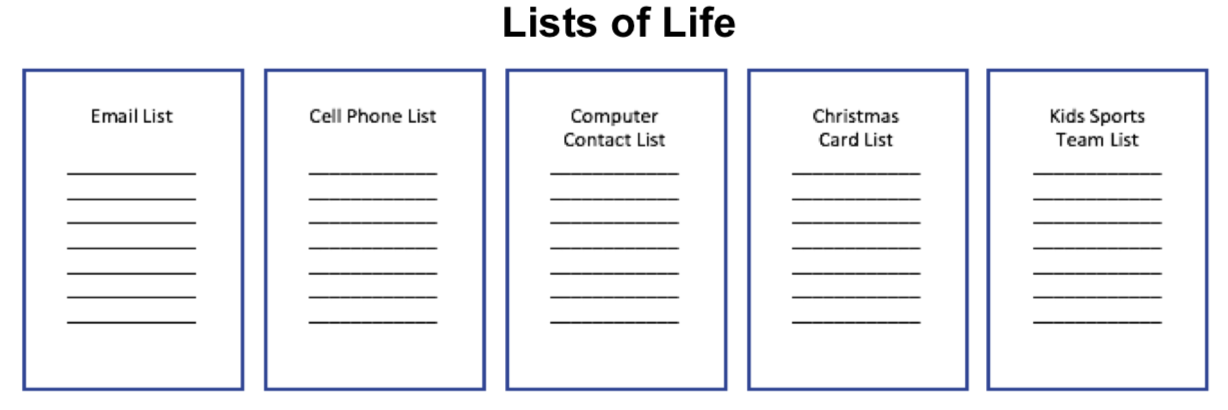Pray – One of the most important principles of spiritual leadership is to realize you can’t do this on your own. No matter how long you’ve been a Christian or been involved in ministry, you need the power of the Holy Spirit. Lean on Him, He will help you. God already knows who needs to be in yourgroup, so ask Him to lead you to the right people.
Identify Your Target Audience – Determine who you would like to attend your group. Your target audience may be a wide range of people from various age groups and life stages or it may be a specific demographic, like Moms of Preschoolers or Musicians. Know who you’re looking for.
Think Outside Journey Church – Journey Groups are not restricted to only those who attend Journey Church. If you have any neighbors or co-workers that would benefit from a Journey Group, invite them to join you. If they live in the same neighborhood, it will be especially convenient.
Compile A List of People Who Are in Your Circles of Life & Lists of Life – This list may include family, friends, neighbors, school, work friends, gym friends,etc. (See Circles of Life & Lists of Life Resource Here.)


Market Your Group – Do people know your group exists? Think strategically and creatively about how you can make people aware of your group. Consider making business cards for your group, a Facebook page, flyers, t-shirts,etc. Also, never underestimate the power of a personal invitation! People follow people, not programs.
Participate in Journey Group Sundays or Campaigns – These are special Sundays with an emphasis on Journey Group signup. The signup process takes place before and after morning services. Be friendly and personally invite people to your group. If you personally invite people, there is a higher probability that they will attend your group.
Tips to Remember
Don’t Be Afraid of Someone Saying “No” – You are not a failure if someone declines your invitation. They may have a good reason or may be involved in another group. Besides, they may just as easily say yes!
Contact Those Who Sign Up for Your Group – If someone signs up or expresses interest in your group, be sure to reach out to them as soon as possible. Express your excitement that they have shown interest in your group and take time to answer any questions they may have. Make sure they are aware of your meeting time and place.
Friendly Reminders – Most of us have busy schedules so a text or email a few days before the meeting and also the day of the meeting can be very helpful.
Make Follow-Up Calls – After someone visits your group, a call or text can go a long way, it shows the individual you care! Let the individual know that you were excited to have them and let them know they are welcome to future meetings. Fill them in on any upcoming meetings and answer any questions they may have.
View Transitions as Strategic Times to Connect People – When people share significant life events together, it’s a great opportunity to connect them in a group. Transitional events would include baptisms, baby dedications, weddings, etc. Also, think about those who are going through difficult seasons in life and how your community can rally around them.
Show You Care – We’ve all heard the old adage, “No one cares how much you know, until they know how much you care.” Small acts of kindness go a long way! Consider sending cards for birthdays, anniversaries, graduations or during the holidays. If someone is sick or in the hospital, a simple text of encouragement can be a ray of hope!
Meet Consistently – If your meetings are scheduled once a week, try to meet the same day and time each week. By doing so, your meeting can become a constant in your group members schedule. This also demonstrates commitment to your group members.
Don’t Be a Lone Ranger – Avoid the temptation to go at it alone! Work hard to build a core of three or four people you can bounce ideas off of. Think strategically as a team about how your group can connect new people. There is power in collaboration!
